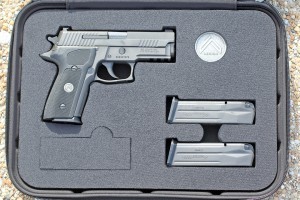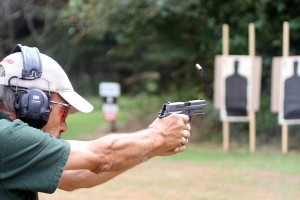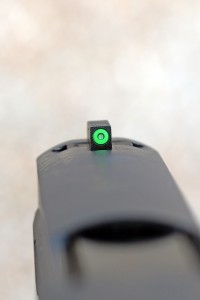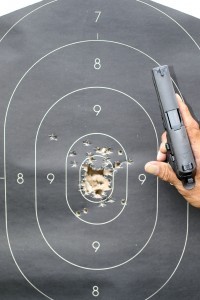Massad Ayoob's Blog, page 107
October 26, 2015
JELLY BRYCE RETURNS
A while back, I did a review of my old friend Mike Conti’s first historical novel, focused on the early years of early 20th Century gunfighter Jelly Bryce, who started out as a city cop in Oklahoma and moved on to J. Edgar Hoover’s fledgling FBI. Now comes the second book in Mike’s trilogy, “Jelly Bryce: FBI Oddyssey.” 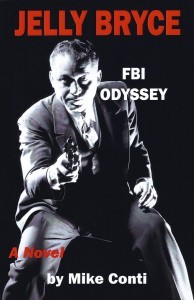
A long-time Massachusetts state trooper, and still a top-ranked firearms instructor in his retirement, Conti knows his stuff and effectively brings Bryce back to life. Mike has deeply studied his subject. Hoover did indeed bring gunfighters on board when he realized accountants and lawyers with guns weren’t up to the challenges posed by ultra-violent criminals like John Dillinger, Baby Face Nelson, and Bonnie (Parker) and Clyde (Barrow). One such “lateral transfer,” Charles Winstead, was the man who killed Dillinger.
One particular thorn in Hoover’s side was Vincent “Mad Dog” Coll. Mike tells me that some folks believe Bryce might have been sent after Coll. Conti himself doubts that, as I do: Bryce isn’t known to have spent a lot of time in Coll’s northeastern bailiwick, and the timing isn’t quite right. However, Mike thought it ought to be addressed. I won’t spoil it for you, but suffice to say that the manner in which Mike wrote that element into this book could be used to teach creative writing.
The new book closes with Hoover and Bryce still in the honeymoon phase. Alas, history shows that when an individual agent got more press than J. Edgar himself, the big boss was not pleased. Melvin Purvis was one example, and Bryce was fated to be another…but that, I expect, will have to wait for the final volume of Conti’s trilogy.
For now, I have to say I enjoyed heck out of “Jelly Bryce: FBI Odyssey” by Mike Conti, and I suspect you will, too. It’s available on Amazon.
Share or Bookmark












October 22, 2015
12-TIME NATIONAL CHAMP ON TRIGGER PULL
Gunnery Sgt. Brian Zins, USMC Retired, won the national championship of conventional bulls-eye pistol shooting a dozen times, more than anyone else in history. When he talks about marksmanship, I listen. One-handed pistol shooting at 25 and 50 yards places a premium on trigger control, but his advice on the topic can apply to any type of firearm. (I had the chance to meet Gunny Zins a bit over a decade ago: he’s an excellent teacher, and a fine man of the kind we’re proud to see as the face of American shooting sports.)
Recently, he wrote this article for the NRA. Among other things, he takes the rather controversial position that the distal joint of the trigger finger is a more advantageous position for the shooter than the traditionally-recommended “pad” of the index finger, which I would define as the part where you find the whorl of the fingerprint.
I teach it as a very useful technique, assuming the gun fits the hand when you shoot this way. Among other things, it gives the shooter’s finger more leverage, ergo, more control.
All y’all trigger-pullers out there, after you’re done reading Brian’s thoughts and experiences, I’d be interested in hearing yours.
Share or Bookmark












October 18, 2015
DENIERS
In the past, we’ve had “Holocaust deniers.” Now, in the latest wave of anti-gun hysteria, we have people denying reality on a related topic.
But we also have truth, fortunately, as seen here via Richie Feldman.
Share or Bookmark












October 14, 2015
ON ANOTHER NOTE
After the first Democrat debate on CNN, I’ll get sick to my stomach if I get deep into “gun politics” today. Jim Webb, thanks for recognizing the need for individual self-protection among the citizenry. I wish you had mentioned how successful the Richmond project in your state, Project Exile proved to be in getting real criminals with guns off the street through proper prosecution and actual punishment instead of the symbolic legislation your opponents were pushing. Sanders, Malloy – need we remind you that “the Second Amendment ain’t about duck hunting”?
That said, though – to get off the politics before my gorge rises – hunting is ONE of the very good reasons for responsible firearms ownership, and I haven’t addressed it much here lately. Hunting season is upon us, as I noted in Backwoods Home magazine’s current issue.
My own schedule won’t allow me afield this year, darn it. Too late for me, but not necessarily for you.
What are you planning to hunt this season? Where? With what? And do you have any favorite game recipes to reveal to our readers?
You’re invited to share here.
Share or Bookmark












October 9, 2015
COUNTERING ANTI-GUN FALSEHOODS
Well, they’re at it again. Their egos deeply invested in their narrative that “guns are bad and so are the people who own them,” we now hear prohibitionists telling us that no mass murder has ever been stopped by a “good guy with a gun.”
Au contraire. Here are a dozen cases where armed good people of both genders stopped massacres by drawing and if necessary, firing their own guns.
To this list I would add the Aurora, Colorado church shooting which, ignored by the media, happened within two months of the mass murder in the “gun free zone” theater in that same community. The perp opened fire at the church, killing an innocent woman; before he could claim any more victims, a parishioner drew his own legally-carried concealed handgun and shot the murderer dead. Didn’t read about that in the mass media, did you? Or the incident some years ago in Cape Town, South Africa where organized terrorists attacked a church and opened up with machine guns and grenades, but were routed by a single parishioner who returned fire with a five-shot snub-nose .38. And shall we remember the many armed citizens who saved people at the Westgate Mall terrorist attack, while soldiers and police fibrillated outside?
Note that from the monster at Sandy Hook to the one in the Aurora theater to the latest at the Oregon campus, these punks have surrendered, suicided, or gone down in front of righteous gunfire as soon as good guys with guns entered the equation.
The mayor of Bethlehem has recently called on more citizens to carry guns and stop terrorist attacks, recognizing that armed citizens have done so before in his country . Said the mayor, “If we look at the statistics in Jerusalem and elsewhere, we see that aside from the police, civilians carrying weapons have foiled terror attacks. They will increase the likelihood of fast intervention.”
I wish American politicians and pundits could face reality so.
Share or Bookmark












October 6, 2015
SIG LEGION: A NEW APPROACH
Today, October 6, SIG announces its new Legion series of up-featured pistols in their SIG-Sauer Classic line: http://www.legionseries.com/ .
I’ve been running a pre-release Legion P229R 9mm for a few weeks now in Florida, Texas, and the Midwest. My review will appear in a future issue of American Handgunner magazine.
Salient points: First, the company made the Legion modifications based on recommendations from some of its heaviest-hitter users in police work and military special forces, compiled by their own highly-skilled and well-informed instructors at the company’s excellent school, SIG Academy. Since SIGs are used by many police agencies and are standard issue with SEALs, this is a great pool of knowledge to draw from. Second, they’re creating an on-line “club” for Legion buyers, sort of like a sports car owners’ club. It’s going to be interesting to see if that becomes a trend. The promised quarterly e-newsletter with input from other owners could prove valuable.
I like the new “X-ray” sights, particularly the fact that they were dialed in for point of aim/point of impact out of the box. With a Bruce Gray adjustable trigger and factory action hone, the Legion is about halfway between the already-famously-smooth standard SIG trigger pull, and a custom job by a top gunsmith like Gray or Ernest Langdon. I was pleased with it. In three runs on 60-shot police qualifications in three states, it has given me three perfect qual scores (300/300) and a 599 out of 600 score on the tight rings of a B27 police silhouette in competition scoring. Tough to ask for more than that. One brand of cheap ammo from WalMart felt weak, which would explain the extraction failures that occurred with it, but with an MSRP of $1428 (expect a gun shop price in the low $1300s), the Legion’s target market doesn’t buy their ammo at WalMart. The SIG Legion ran 100% with several other types of standard pressure, NATO, +P and +P+ 9mm ammo, and I’m carrying it today with confidence.
New approaches to interacting with end users are always welcome. I wouldn’t be surprised to see other firearms manufacturers copying what SIG has done with these new Legion pistols.
Joining the Legion club makes you eligible for all sorts of goodies. That sort of empty space in the custom case is for your choice of several designer knives with Legion logos, not included with pistol.
Shooting a pace-setter qualification with the P229 Legion. Shooting characteristics were excellent.
“X-RAY” day-night sights worked great.
Legion delivered 599 out of 600 in competition scoring for 60 timed shots; the 9 at 10 o’clock was Mas’ fault, not the pistol’s.
Share or Bookmark












October 2, 2015
TRAGEDY – AND A LOGIC TEST – IN OREGON
Another mass murder. CNN goes into full 24/7 propaganda mode, every few minutes repeating President Obama’s knee-jerk anti-gun diatribe.
Sheriff John Hanlin of Douglas County refused to name the monster, and give him the credit he obviously sought. Good for the Sheriff. Yet CNN committed a massive act of hypocrisy in this regard. They reported that early indications were that the homicidal narcissist did it solely to win some sort of sick fame…and then spent the night rewarding him with exactly that. What better incentive for the next sick, thwarted loser to become the next copycat?
In a speech undoubtedly prepared beforehand to allow an early dance in the blood, the President indicated he felt there were “scores of responsible gun owners in this country.” Gee, Mr. President, you think there might be as many as forty or so of the millions of Americans who are good at heart and responsible? Damn sportin’ of ya, dude.
The Chief Executive expresses incredulity that anyone might believe that more guns might have stopped this. “Does anyone really believe that?” he asks, with his Shocked Face.
You’re damn right we do, sir – BECAUSE THAT’S EXACTLY WHAT HAPPENED IN OREGON! As soon as the cops got there with MORE GUNS, the killer was down and done. But the victims died or were mangled during the inevitable time it took them to get to the gun-free zone hunting preserve for psychopathic murders, where we are told that even the single security guard on duty was unarmed!
Think of it as a test in applied logic and critical thinking. Our President and CNN have both flunked. Let’s hope the rest of America passes the logic test.
Our hearts go out to the victims and their families. If a single “good guy or gal with a gun” had been there, this outrage might have been prevented.
Share or Bookmark












September 28, 2015
REPORTAGE OF THE POPE’S VISIT
As our news media became “all Pope Francis, all the time,” TV sources don’t seem to mention that in a great show of confidence in his 36,000 officers, the Commissioner of the New York City Police Department instructed them that if they took their families to see Pontiff while off-duty, they had to leave at home the guns they’ve traditionally carried 24/7. “Welcome to our world,” say some Second Amendment advocates in the private citizenry.
All I’ve learned from Fox and CNN about the Papal visit is:
The news has become a potpourri
Of every element of Popery.
Francis has said nothing hokery
and solemnly made no jokery,
nor offered much changery or hopery.
He’s said nothing “slippery slopery,”
and has not been the victim of mopery,
and said nothing worthy of Snopery.
And for that, at least, this observer of unfortunate current news trends is grateful.
Share or Bookmark












September 25, 2015
LAW DOGS
In past blog entries here, I’ve reviewed the action police novels of my friend and fellow police trainer Dan Marcou, all based on actual violent encounters in law enforcement history but rendered as fiction. Dan has now taken the logical next step and gone straight non-fiction in his newest book, “Law Dogs: Great Cops in American History.”
A retired SWAT operator from a busy Wisconsin venue, Dan is a nationally respected police instructor who does his research and does it deep. Some of the vignettes in his book go back to a time when all those involved were dead before any of us now had been born to write about it, but some of them involve people Dan and I know personally, and I can tell you what those hero cops told Dan about what they experienced is pretty much what they told me.
Any of us reading this can face death at any moment. Dan’s book “Law Dogs” shares such experiences. If you think about it, “training” should be “authentically replicated experience,” and as much as a book can do that,. “Law Dogs” delivers.
There are times in people’s lives, cop or soldier or “civilian,” when you look Death straight in the face and realize, “I’m probably going to die in a few moments, but there is something I have to do, right now” … and if you do that thing, you survive and continue to be a productive member of your society. And, if you share with others that right thing which helped you to survive, you may even help other good people in your world to emerge unscathed, too, from such deadly danger.
I’ve been there, and so has Dan Marcou, and that’s the prism through which he shares with you the experience of the heroic men and women about whom he writes. Dan and I don’t see exactly the same lessons from everything in every one of the cases he delineates, but hell, that’s how instructors are in every discipline involving anything serious which ever might suck you into it.
The bottom line is, if you think you might ever find yourself or someone you love facing death at the hands of one or more violent criminals, the heroic men and women you’ll read about in “Law Dogs” will be role models whose example, should you follow true to them, can save the lives of you and other innocent persons you have a right to protect.
Which is why, needless to say, I consider “Law Dogs” by Dan Marcou “recommended reading.” You should be able to find it on Amazon.com.
Share or Bookmark












September 20, 2015
WILL TRUMP TRUMP THE REST ON 2A ISSUES?
If ever a candidate for President crafted a position paper to win over the pro-Second Amendment community, it is this one.
Here, from National Shooting Sports Foundation are some other candidates putting their current positions on the record.
or watch the video here
Your thoughts?
Share or Bookmark












Massad Ayoob's Blog
- Massad Ayoob's profile
- 64 followers


